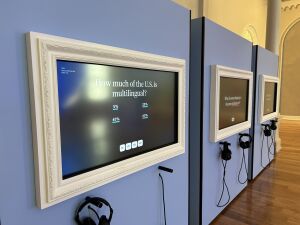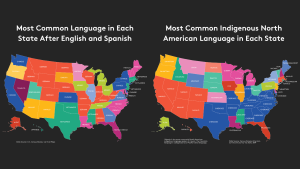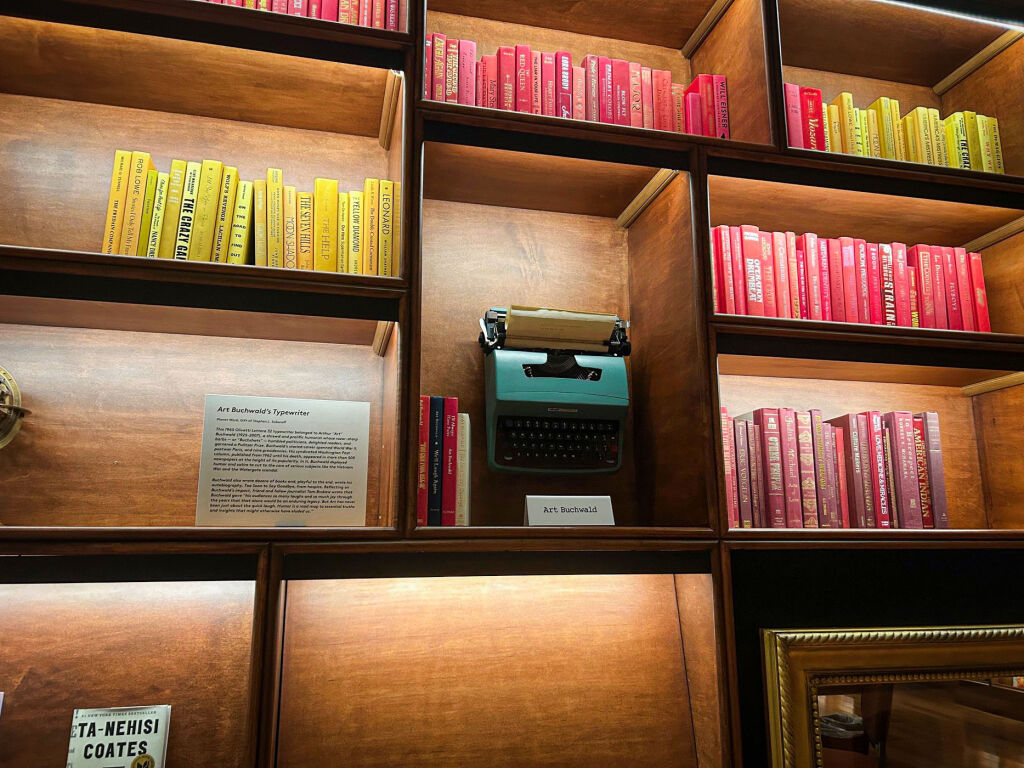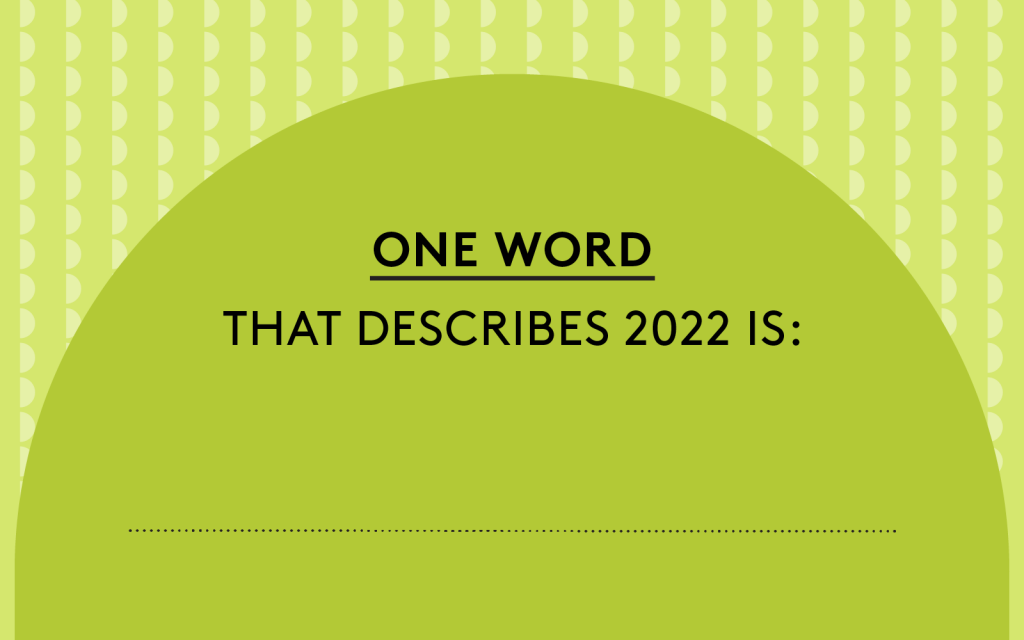Inside Look on Multilingualism: Creating Planet Word’s Newest Interactive Display

Did you know that, in addition to the main features of our galleries — like our stunning Word Wall and enchanting Story Table — Planet Word has interactive touchscreen displays that dive into more than 20 other word-related topics? These voice- and touch-activated displays, which we call beacons, explore language and linguistic subjects ranging from dyslexia and dialects to joke telling and rhythm in poetry. Our newest addition, located in the Spoken World gallery, explores multilingualism from many fascinating angles, answering questions like: What factors promote multilingualism? How many languages can one person learn? Why are babies such super language learners? Is there a best way to learn more than one language? Join us for an insider’s look as we pull back the curtain on the process involved in bringing this important topic to life at Planet Word.
Why Multilingualism?
Creating content about multilingualism was a no-brainer for Planet Word. In the Spoken World gallery, visitors can learn all about languages — from 30 mini language lessons celebrating linguistic diversity across the globe to beacons about constructed languages and endangered languages. This new addition speaks to our many visitors who may be multilingual, raising bilingual children, interested in learning a new language — or simply curious!
While multilingualism is less common in the United States than abroad, it is on the rise, and the growing number of bilingual schools and programs serving English language learners and native English speakers shows that Americans are keen on embracing multilingualism as citizens of a world where more than half of all people speak or sign more than one language.

The U.S. Census Bureau reports that 1 in 5 Americans speak or sign more than one language, with the most spoken languages in each state being English and Spanish.
Creating the Interactive Display
There are three major steps in developing all our museum content: exploratory research, content development, and production.
In developing each beacon, first we launch a research phase, drawing upon a variety of sources to develop an outline. The outline summarizes the big ideas we want visitors to come away with. For instance, in the case of this new beacon, we wanted visitors to understand how common multilingualism is — both abroad and in the U.S. Another idea we wanted to emphasize was that while anyone at any age can become proficient in a new language, babies’ brains are particularly good at learning new languages! We also wanted visitors to know about the many benefits that can arise from using more than one language.

SEAL’s video, “Bilingualism Through the Eyes of a Student,” features bilingual kids sharing advantages of using more than one language.
We also look for interesting audiovisual assets that enhance the interactive presentation and will convey key messages in a compelling way. That includes stock imagery, infographics, maps, and video footage. For the multilingualism display, we sought video rights from I-LABS at the University of Washington and SEAL, a California-based organization that provides an evidence-based approach to multilingual learning. Videos like theirs let visitors hear and learn from people with firsthand experience and expertise in the field of multilingual research. “We are honored to partner with Planet World and join in our shared mission to foster love for language, celebrate multilingualism, and embrace the diversity that defines our global community. We hope the video will continue to inspire all,” said Patty Chavez, SEAL’s Head of External Relations.
Once the outline is complete, we begin drafting the script. For this purpose, we consulted with Kevin Donley, a Postdoctoral Fellow at Georgetown University who specializes in multilingual pedagogy. “This is such a timely inclusion to the museum because it reminds us that the United States has never been a monolingual country and that, really, multilingualism is the global norm,” said Donley. “Additionally, as our theories and general understandings of language and multilingualism continue to shift, this beacon recognizes that there is no standardized or ‘one-size-fits-all’ approach to learning and communicating in multiple languages. Rather, multilingualism is an inherently strategic, flexible, and creative practice that can take a multiplicity of forms.”

Custom graphics, like this one representing a baby hearing the sounds of many different languages, add color and visual interest to the beacon.
Finally, after several rounds of internal edits and review, members of Planet Word’s Advisory Board review the script to ensure it is as academically rigorous as it is engaging and entertaining.
Then, it’s full steam ahead on production! We record the narration with the help of an audio engineer and a voiceover actor, listening to make sure we strike the right tone and get the phrasing and pronunciation right. The audio files are transcribed for accessibility.
Finally, all the elements — audio files, captions, images, videos, and graphics — are uploaded to our Content Management System, and our team thoroughly tests the assembled interactive.
And with that, the beacon is launched! So, whether you are a polyglot, a parent, a curious monolingual, or somewhere in between, you’re sure to learn something surprising and educational from our new interactive. In our multicultural, multilingual world, this beacon should prove an exceptionally useful guide!



